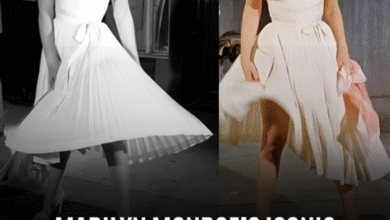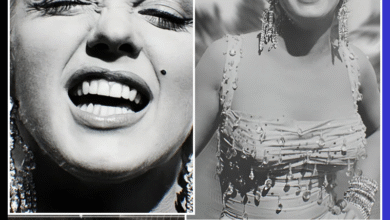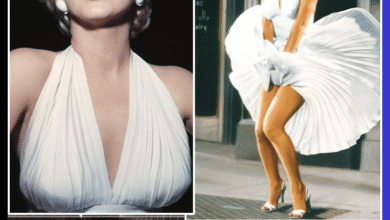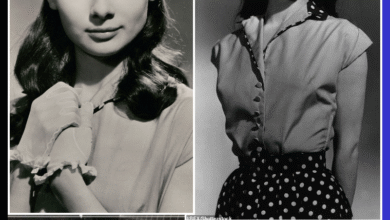How a World War II Photographer Sparked Marilyn Monroe’s Iconic Transformation
OPINION: This article may contain commentary which reflects the author's opinion.
Marilyn Monroe’s name is synonymous with glamour, beauty, and iconic status, but long before she was the siren of Hollywood, she was Norma Jean Dougherty, a young woman struggling with self-doubt and uncertain about her place in the world. In 1944, at the age of 18, Monroe’s journey toward becoming one of the most recognizable figures in pop culture was still in its infancy. The path that would lead her to fame was an unlikely one, set in motion by a chance encounter with a photographer that would change her life forever.
Norma Jean Dougherty: A Quiet Struggle for Change
At the time, Norma Jean, still under her married name of Dougherty, was far from the confident starlet we would come to know. “I knew how third-rate I was,” she reflected in her memoirs, describing her early self-perception. “I could actually feel my lack of talent as if it were cheap clothes I was wearing inside. But, my god, how I wanted to learn, to change, to improve.” These words painted a picture of a young woman desperate for a transformation that seemed out of reach, especially in the midst of the turbulence of World War II.

Her then-husband, Jim Dougherty, had enlisted in the Merchant Marines, and she was left to work in a munitions factory while he was deployed overseas. At the time, she was far removed from the world of film and modeling, working diligently at the Radioplane Company, a factory that produced remote-controlled drones for the U.S. Army Air Forces.
A Photographer’s Eye: David Conover and the First Step to Stardom
It was during this time, in 1944, that Norma Jean’s life took a pivotal turn. David Conover, a photographer for the U.S. Army Air Forces’ First Motion Picture Unit, was tasked with taking pictures of the all-female workforce to boost the morale of soldiers stationed overseas. Conover was instructed to capture the faces of these women, whose work in the factory was a significant contribution to the war effort.
When Conover encountered Norma Jean on the factory floor, his attention was immediately drawn to her. Despite her curly ash-blond hair being smudged with dirt from her work, Conover saw something extraordinary in her. “I snapped her picture and walked on. Then I stopped, stunned. She was beautiful. Half child, half woman, her eyes held something that touched and intrigued me,” he recalled. His remark that she was a “real morale booster” would mark the beginning of Norma Jean’s transformation. “I’m going to take your picture for the boys in the Army to keep their morale high,” he told her, not knowing that his decision would lead to one of Hollywood’s most unforgettable stories.
That simple photograph would change everything. Conover, struck by her natural beauty and captivating presence, encouraged Norma Jean to pursue modeling. It was this moment, a serendipitous encounter, that set her on the path to becoming Marilyn Monroe.
A New Identity and Relentless Determination
Fuelled by the opportunity Conover had provided her, Norma Jean made the bold decision to leave her job at the factory. She defied her husband, who was unaware of the growing desire within her to pursue a career in modeling, and signed a contract with the prestigious Blue Book Model Agency in 1945. With a new direction ahead of her, she adopted a new look and a new name: Marilyn Monroe.
Her determination to succeed was unwavering. She studied how to pose and work a camera, often taking photographs of herself to examine and improve her technique. She also made the bold decision to bleach her hair platinum blonde, a move that would become her signature look and one of the defining features of her image. “I wouldn’t settle for second best,” Monroe later said of her relentless drive. “I would take home photographs of myself to study how I looked and if I could improve myself posing in front of a mirror.” This obsessive pursuit of perfection became a hallmark of her journey, as she transformed herself both physically and professionally.
The First Glimpse of Stardom: 20th Century Fox
Monroe’s hard work and dedication eventually paid off in 1946, when she caught the eye of 20th Century Fox. The studio offered her a screen test, and while the contract ultimately fell through, it was a crucial turning point. This opportunity opened the door to future roles and marked the start of her professional transformation from a model to a movie star.
Though she faced several setbacks, Monroe’s breakthrough was imminent. The screen test served as a window of opportunity, offering a glimpse into the future that awaited her. A few years later, Monroe would become one of Hollywood’s most beloved and iconic actresses, known for her roles in films like Gentlemen Prefer Blondes, Some Like It Hot, and The Seven Year Itch. Her star power would only grow, and her presence in the cultural zeitgeist remains strong to this day.
Conclusion: The Chance Encounter That Defined a Legacy
What began as a chance meeting in a factory during the Second World War ultimately changed the course of history. The photographer’s keen eye, Norma Jean’s drive, and her willingness to seize an opportunity set in motion the career of a woman who would become synonymous with glamour, tragedy, and timeless beauty. Marilyn Monroe’s story is often defined by her status as a pop culture icon, but it all started with that fateful photograph—a snapshot that transformed Norma Jean Dougherty into one of the most famous actresses to ever grace the silver screen.



